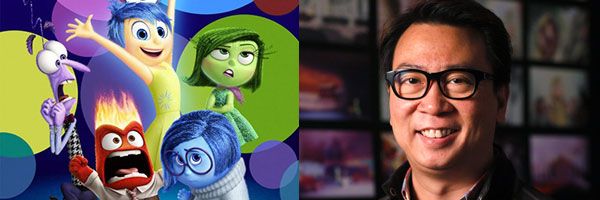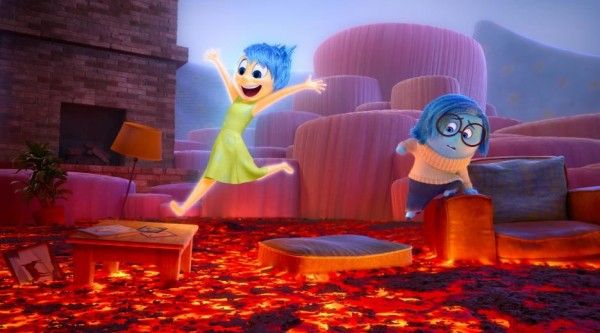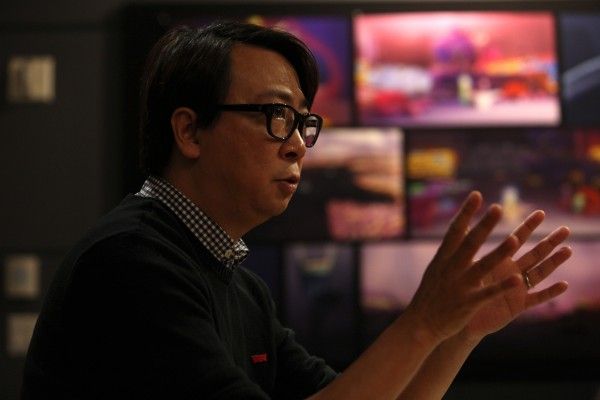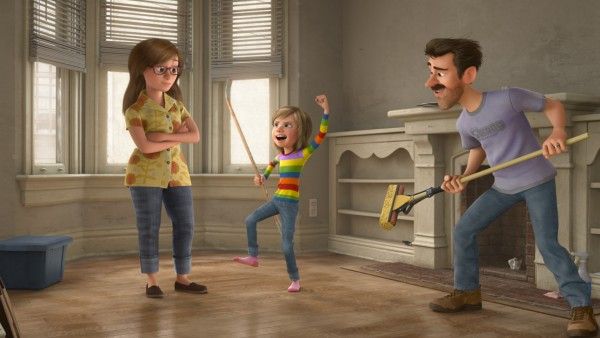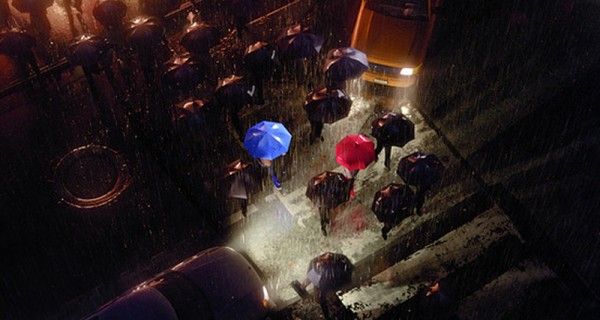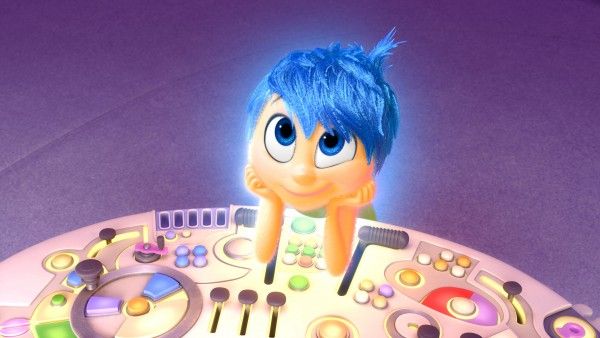As one might expect, there are some big differences between making a live-action movie and making an animated movie, however, Inside Out’s director of photography, Patrick Lin, found a good deal of crossover while bringing the real world and Riley’s mind world to screen.
When I visited the Pixar campus back in April, I got the opportunity to sit down with Lin for an exclusive one-on-one interview. He explained the difference between a DOP and a layout artist, his choice to incorporate live-action lenses, his steadicam substitute, the techniques he used to make moving from the real world to the mind world and back again feel seamless, and much more. You can check it all out in the interview below. Inside Out is currently in theaters and I can’t recommend it enough.
Question: Can you start by telling me the difference between a layout artist and a DOP?
PATRICK LIN: I basically supervise all the layout artists. We have ten layout artists on Inside Out and I am basically their supervisor. I’m like kind of like the in between person to talk to other departments. I also communicate with the directors and try to communicate back with them and get them to talk to the director directly, it’s even better.
So it’s kind of a natural transition to go from being a layout artist on one Pixar film to being the DOP on another?
LIN: Yes, I actually hop from project to project. I was the DOP on Up and then I’m the layout artist on Brave and Monsters University, and then I go on to DOP for Blue Umbrella and then I come to this one. Now I’m the layout artist on Dino [The Good Dinosaur].
Is there a specific rotation? Do they have a whole group here where you go, ‘It’s your turn to DOP now?’
LIN: No, we have a very small team. We only have 26 layout artists including five DOPs. And we have a very small department and basically we just - I think with every film they go through an interview process, but I personally love building shots too. It’s just good practice, it’s fun. And sometimes you don’t have to deal with everything, you’re just doing the work in front of you. There’s something very zen about it.
Is there anything about your skill set specifically that made you the appropriate person to DOP Inside Out?
LIN: It’s hard to say, but I think I’m a little bit different in that I don’t come from a traditional animation background. I studied live-action film. I can’t draw, so I never thought I’d be in animation. So I come from a traditional live-action background. I always approach making these films as if they’re live-actions. I never reference animations, always reference live-action films because I think they are just naturally richer in terms of the visual language that I can draw from.
So did you push that whole system you described earlier where you take live-action camera lenses and incorporate them into the film? Was that your choice or did the team as a whole want to shoot it that way?
LIN: That’s kind of my choice. In the beginning of the production, when I was talking to Pete [Docter] and Ronnie [Del Carmen] how we might want to shoot the film, and then every department, not just us, you know, art, lighting, they all seem to like the contrast of the two worlds. And then it’s sort of natural that if I can define the camera language to define our two worlds, once I decided to do that, then it’s like what kind of language do you want? You want something subtle, but not too subtle that no one can notice. The fine line is that you want something that is subtle enough that people can feel.
Everyone’s been talking about being able to show the difference between the two worlds in a quick and easy way so that you don’t have to explain and re-explain it. How do you do that through shot progression so that moving from one to the other isn't too jarring for an audience?
LIN: That’s when the screen direction comes in, right? If Riley is looking at screen left, then when we cut to the inside world, Joy should be looking in the same direction. In the beginning, at first we were thinking that one of the visual progressions is in act three, maybe Riley is looking one way and Joy is looking the other way so that they are not connecting at all to represent that. But that actually turns out to be a little too much. We tried it and it just didn’t work. So that’s one of the things that, you plan it, it didn’t work and you just let go.
Can you talk a little bit about what it’s like going into that room where you’re really shooting something? What exactly happens in there?
LIN: You understand the room, right? So the room is filled with sensors and we have a camera that can actually see our digital sets and the sets are locked to the room, so if you are Riley and I’m trying to film you, if I pan off of you, then I’m off of you. So that’s how we capture the camera. We have to do everything inside a room, but every motion we do, it kind of captures it. So all the nuances, all the weight shifts of the cameraman, all the moves forward, steps down, every bounce, it captures it. So that’s why he was on that ream of paper because the camera needs to step off of a curb.
Do you think that’s the future of animation here at Pixar? Is there any reason not to use that system?
LIN: Yeah, well it depends on the style. This is a specific style we’re going for. Everything we do, we’re trying to support the story, like Blue Umbrella. Umbrella is a photo realistic short film and that’s why we want a realistic camera. Here, the inside world is a little bit more cartoony and we want to contrast it with a really realistic real world and that’s why the lighting supports that, the art design supports that, and I think the camera should support it. That’s why we went with the more realistic camera. That’s why I wanted to capture it instead of just programming it.
How do you guys not have a steadicam? You have all this cool stuff and you have no steadicam?
LIN: Because we never really use it. And it just seems like a waste of money because I think I can fake it. You know, why buy it?
So what were you using in that picture? Is it just a small tripod that he’s carrying?
LIN: Yeah, because if you spread out the legs and if you hold it in the center, how you swing it is basically the steadicam movement.
How many people are on your team in that room?
LIN: Two or three. I know it doesn’t look pretty. It looks stupid when we’re walking around with a tripod, but it’s kind of like a foley artist, whatever sound you can make to make that sound, that’s what counts. And in the movie you cannot tell that it’s not done by a steadicam.
How about shooting Joy in particular? Everyone’s talking about the effervescent skin she has and the unique lighting that that requires. Does she call for anything special in your department as well?
LIN: There was one thing we did for Joy that was the hardest for me, but I couldn’t show it because everything resolves in act three. It’s how we use close-ups. Close-up means a certain thing in our movie. Those tight close-ups when it’s cropping off the top of the hair and the chin is almost touching the bottom frame, those close-ups represent adults. There’s a certain way that I have to stay away from shooting Joy until the right moment, so that was kind of the hardest thing to do. I had to keep telling people, ‘It’s too close. Let’s back off. Let’s back off.’ In the layout world, that’s the toughest part.
I noticed that movies likes Frozen and How To Train Your Dragon don’t have a DOP credited. Is there any reason that you guys do and they don’t?
LIN: I don’t know. I think it’s the same job, it’s just layout and lighting. Sometimes I don’t understand these things. People take credit so seriously. It’s just a name that you give people and if they did the job why don’t you just give it to them? [Laughs]
[Laughs] I very much agree!

